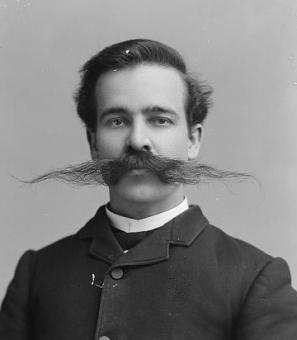The White House Easter Egg Roll: A Washington Tradition Since 1878
"These children came, as they came yesterday, regardless of age, sex, 'color or previous condition of servitude,' white, black, and yellow. ‘Including Indians not taxed,' and there they practically demonstrated that part of the Declaration of Independence which says that all are born with equal rights to the pursuit of happiness. Yesterday children of Southern aristocrats rubbed elbows with plekininnies as black as the ace of spades. There was neither social nor race distinction, but there was an overflowing of the milk of human kindness, which makes all mankind kin."[1]
Readers of the Washington Post on Tuesday, April 5, 1904 were reminded of two unique Washington traditions. First, each Easter Monday since 1878 the President of the United States had welcomed children to the White House grounds for an egg rolling celebration. Second, the event was open to all, regardless of race. In the era of Jim Crow, when most institutions throughout Washington and the South were segregated, the latter point is perhaps more surprising than the first.
The White House Easter Egg Roll began in 1878, somewhat by accident.[2] For years prior, Washington children had ventured to the U.S. Capitol grounds to roll their dyed hard-boiled eggs on the lawn.[3]
However, after Easter Monday in 1876, Congress enacted a rule saying it was "the duty of the Capitol police hereafter to prevent any portion of the Capitol grounds and terraces from being used as play grounds or otherwise, so far as may be necessary to protect the public property, turf and grass from destruction or injury."[4] Children were no longer allowed to roll their eggs on Capitol grounds.[5]
The new rule was not challenged in 1877 since it rained all Easter Monday and kids were kept indoors.[6] However, this was not the case in 1878. That year, a group of children and their guardians made their way to the Capitol to continue the tradition. According to legend, when they were stopped by the Capitol police, one nurse decided that the White House's lawns were suitable for rolling eggs and took her child there. Others followed her.
"On reaching the Executive Mansion, they boldly marched in, nodding a bright and cheery good morning to the doorkeeper, who was most probably so awed by the sudden appearance of the imposing band of youngsters that he could think of nothing to say, and so in they marched, and unconsciously commenced a custom which has lived for many years since, and we hope will always be a part of the daily routine of every Easter Monday in the city of Washington.”[7]
President Rutherford B. Hayes was notified of the unexpected guests. He instructed his guards to let more kids in, and, so, the tradition began.[8] By 1880, the Evening Star reported that on Easter Monday kids took "absolute possession of the grounds south of the White House."[9] The tradition was here to stay.
For most of its history, the White House Easter Egg Roll was a rare opportunity for people of every race and class to mingle during segregation.[10] In 1899, the Washington Post said that “one of the glories of this pretty festival being its stanchly democratic character.”[11] The Evening Star described the diverse scene at the White House in 1890:
“The children ranged from two years to sixty, from the color of the paper The Star is printed on to that of the ink that makes these letters. Race lines, police lines and care lines were all obliterated. Etiquette hid her face behind a veil for a while and conventional propriety stood outside of the park and hung her sad face over the railing. But there were no sad faces inside, all was joy and gaiety, laughter and music, eggs and yellow stains.”[12]
Despite such glowing reports, when it comes to racial dynamics in the nation’s capital, things are rarely that simple. With a nod to the obvious hypocrisy of Jim Crow era segregation, which permeated nearly every other aspect of Washington life, Clarence Lusane discussed the Easter Egg Roll in his book, The Black History of the White House. "Permitting black children to integrate with white children on the White House premises one day a year was acceptable, even though such mingling was illegal in many public spaces throughout the South at the time, including libraries and schools."[13]
Perhaps it's not surprising then, that some in the African American community shied away from the White House Egg Roll. Instead, many claimed a similar event held at the National Zoo as their own. Recalling conversations with her father decades earlier, native black Washingtonian Justine Love remarked, “I would always ask why we couldn't go to the White House to the Easter Egg roll, and he'd say because this activity [at the Zoo] is better for us."[14] Longtime D.C. resident Iris Gray shared similar sentiments with The Root in 2015, “The reason that we migrated to the zoo for Easter is because it was more acceptable here and more comfortable.”
Though some opted to go elsewhere, the White House Easter Egg roll continued to grow to the point where crowd control measures had to be put in place. To limit the number of people allowed in, a rule was passed that only allowed children and the adults that accompany them to enter. All other adults were prohibited from entering.[15]
The new rule presented opportunities for enterprising young capitalists who would “‘hire themselves out’ and deign to accompany a lone adult in the gate of the White House grounds for the bountiful sum of 5 or 10 cents.”[16] Perhaps none was as inventive as a "young blockade runner" named Mickie Flynn who, in 1909, perfected the act of sneaking adults into the event for a fee.[17] According to the Evening Star, Flynn would hang out in the entrance, negotiate with potential customers, then walk into the White House with the adult. Once inside, he would exit through a gate far away from the one he entered and go search for another customer. Such schemes caused the Secret Service to clamp down on the kid-run "rackets" in 1939.
(Many years, the ban on unaccompanied adults would end at 3:30 p.m, after which all comers would be allowed in to enjoy a concert by the Marine band.[18])
In its history, the Easter Egg roll tradition has been suspended twice – once during World War I and again during World War II – but returned both times to the great relief of Washingtonians. Individual administrations have brought new things to the event. In 1889, President Benjamin Harrison added music by having the U.S. Marine band play as part of the day's festivities.[19] 80 years later, First Lady Pat Nixon had one of her staff put on a bunny costume, and so, began the tradition of having an Official White House Easter Bunny.[20] In the 1980s, President Ronald Reagan and First Lady Nancy Reagan hosted a hunt for wooden eggs signed by celebrities. [21]
Today, 140 years (and counting!) after the first roll at the executive mansion, the Easter Monday tradition continues to be a special date on Washington’s social calendar. As the Washington Post put it in 1911, “Such customs as this egg-rolling on Easter Monday, while belonging exclusively to Washington, serves to take the minds of adults off the seriousness of their own problems and to realize that children, too, have their joys and little tragedies. In all our calendar of holidays there is none reserved to the child alone.”[22]
Happy Easter, Washington! Enjoy the video below of children at the 1902 White House Easter Egg Roll!
Footnotes
- ^ The Washington Post. "Joyous Egg Festival." The Washington Post April 05, 1904.
- ^ The White House Historical Association. Easter Egg Roll: President Hayes Saves the Day https://www.whitehousehistory.org/easter-egg-roll-president-hayes
- ^ The Evening Star. “Gamboling on the Green.” The Evening Star April 6, 1874.
- ^ The Evening Star. “No Egg-Rolling in the Capitol Grounds This Year.” The Evening Star March 28, 1877.
- ^ The Washington Post. "Solid Fun for Tots." The Washington Post April 15, 1897.
- ^ Eschner, Kat. "The Curious History of the White House Easter Egg Roll." Smithsonian.com April 14, 2017. https://www.smithsonianmag.com/smart-news/curious-history-white-house-easter-egg-roll-180962842/
- ^ Crosson, Margaret Blaine. "Egg-Rolling on White House Lawns, Is Custom Started by Children Living in President Grant's Time." The Washington Post April 20, 1924.
- ^ The White House Historical Association. Easter Egg Roll: President Hayes Saves the Day https://www.whitehousehistory.org/easter-egg-roll-president-hayes
- ^ The Evening Star. “Egg-rolling on the White House Grounds.” The Evening Star March 29, 1880.
- ^ The idea that the races came together in the White House on Easter Monday was mentioned by the Washington Post and the Evening Star in 1890, 1893, 1894, 1897, 1902, 1904, and 1905. The Negro Star said the event was "open to all races" in 1939. In 1954, the Afro-American in Baltimore featured photos of black children attending the event.
- ^ The Washington Post. "Tots Roll Their Eggs." The Washington Post April 04, 1899.
- ^ The Evening Star. “Hen-Fruit Day.” The Evening Star April 7, 1890.
- ^ Lusane, Clarence. The Black History of the White House. City Lights Books, 2011. p. 17.
- ^ Gambino, Megan. "Then and Now: Easter Monday at the National Zoo." Smithsonian.com April 10, 2009. https://www.smithsonianmag.com/smithsonian-institution/then-and-now-easter-monday-at-the-national-zoo-46049197/
- ^ The White House Historical Association. Easter Egg Roll: The Holiday Bustle and Hustle https://www.whitehousehistory.org/easter-egg-roll-kids-racket
- ^ Crosson, Margaret Blaine. "Egg-Rolling on White House Lawns, Is Custom Started by Children Living in President Grant's Time." The Washington Post April 20, 1924.
- ^ The Evening Star. “Children’s Own Day.” The Evening Star April 12, 1909.
- ^ The Washington Post. “15,000 Youngsters Romp at Egg Rolling.” The Washington Post April 18, 1922.
- ^ The White House Historical Association. Easter Egg Roll: The President’s Own Comes Marching In
https://www.whitehousehistory.org/easter-egg-roll-president-harrison - ^ The White House Historical Association. Easter Egg Roll: Bunnies and Other Easter Animals https://www.whitehousehistory.org/easter-egg-roll-bunnies
- ^ The White House Historical Association. Easter Egg Roll: Fanfare and Keepsakes https://www.whitehousehistory.org/easter-egg-roll-keepsakes
- ^ The Washington Post. “The Children's Egg Fete.” The Washington Post April 18, 1911.


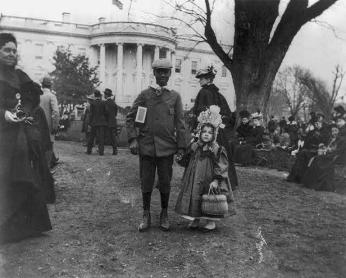
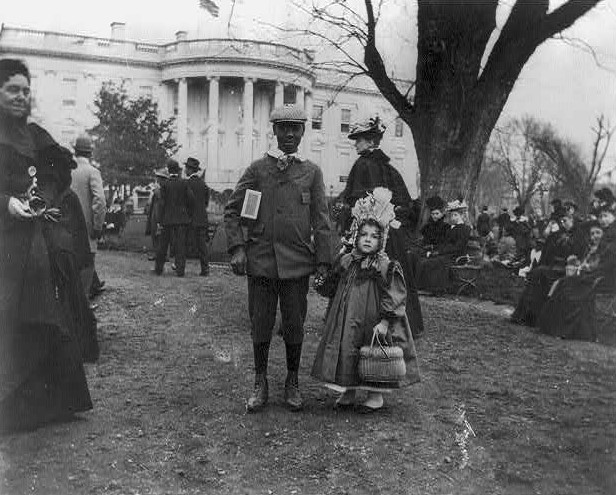
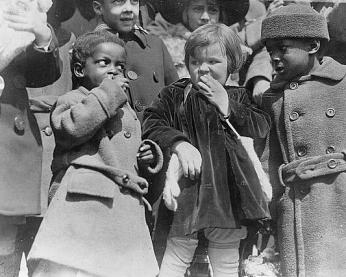
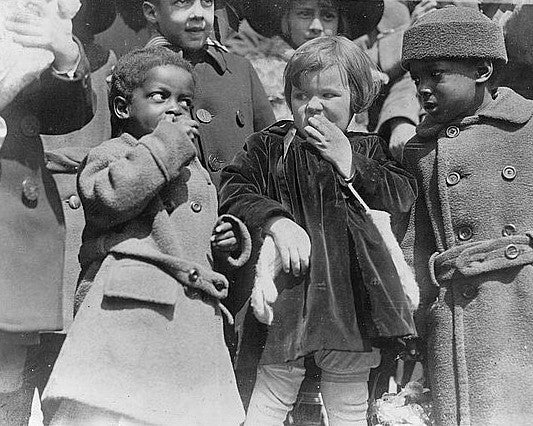
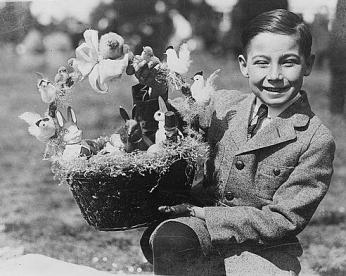
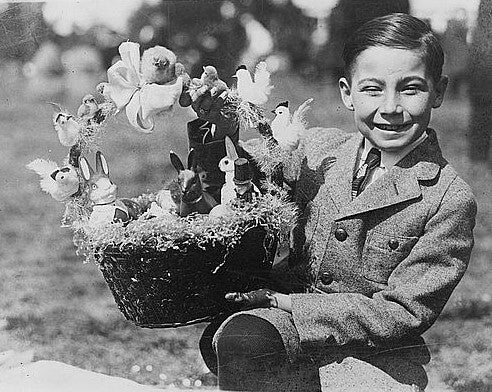
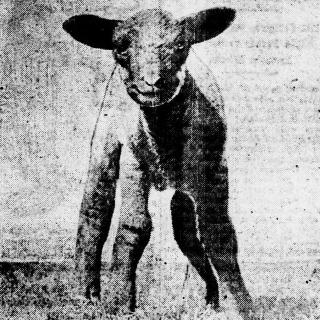

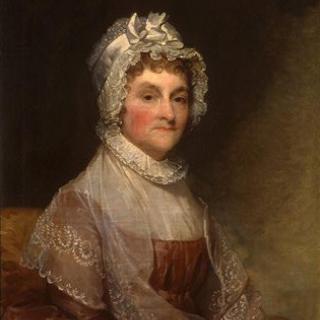
![Sketch of the mythical fuan by Pearson Scott Foresman. [Source: Wikipedia]](/sites/default/files/styles/crop_320x320/public/2023-10/Goatman_Wikipedia_Faun_2_%28PSF%29.png?h=64a074ff&itok=C9Qh-PE1)











